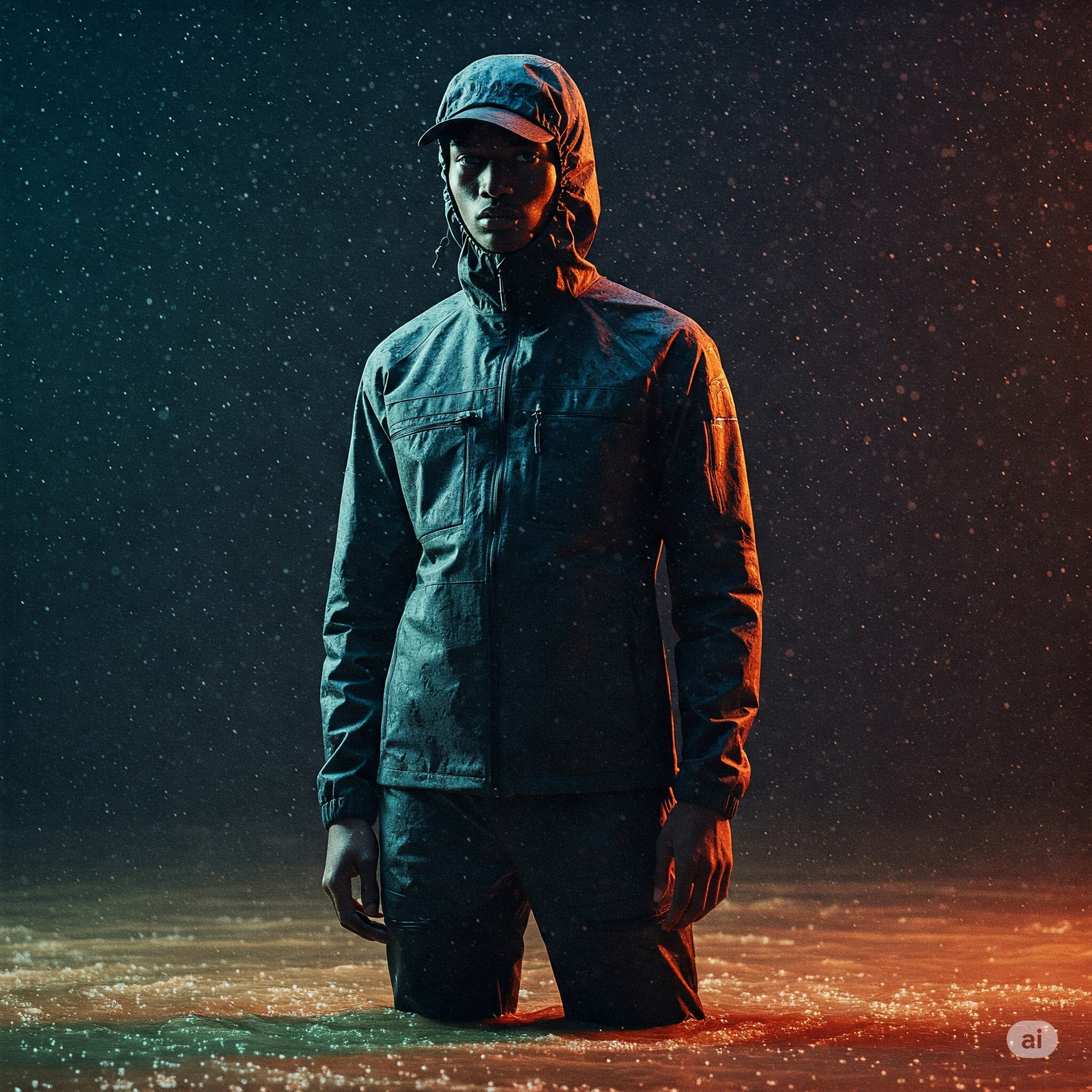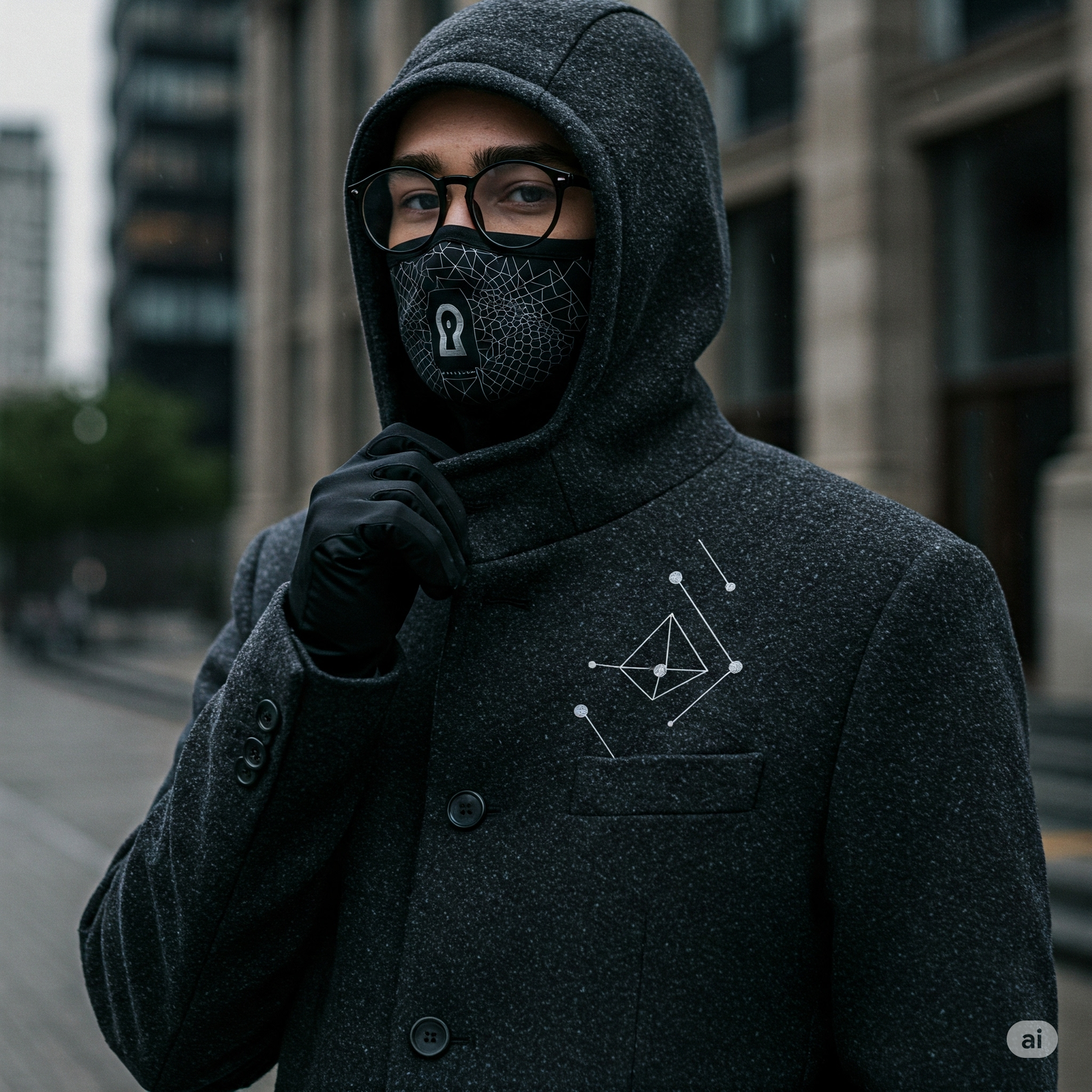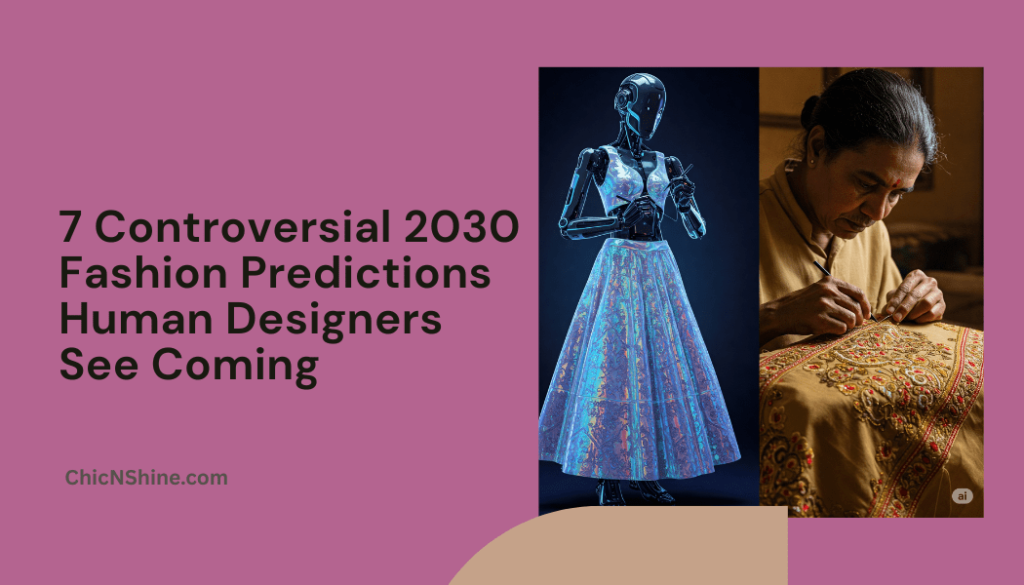The Human Edge in Fashion Forecasting
When I first started working in fashion forecasting fifteen years ago, we relied primarily on instinct, street observation, and designer intuition. Today, AI dominates trend prediction with remarkable accuracy, but it has significant blind spots. The most revolutionary 2030 fashion predictions AI can’t make stem from uniquely human experiences, cultural subtleties, and creative leaps that algorithms simply cannot grasp.
As someone who’s witnessed fashion’s evolution through multiple technological revolutions, I’ve learned that the most disruptive trends emerge from places data can’t reach. After consulting with leading designers, sustainable fashion pioneers, and cultural anthropologists, I’ve compiled seven controversial fashion predictions for 2030 that aren’t showing up in AI forecasts—but insiders are already preparing for.

1. Self-Healing Fabrics Will Create “Living Wardrobes”
The most revolutionary development in 2030 fashion will be self-healing textiles that evolve beyond mere repair capabilities. I’ve seen early prototypes that don’t just mend tears—they actively regenerate and transform over time.
What AI prediction engines miss is how these materials will fundamentally alter our relationship with clothing. We won’t just own garments; we’ll cultivate them. Some cutting-edge designers are already developing fabrics embedded with bioengineered organisms that respond to environmental conditions, body chemistry, and intentional “programming” through special solutions.
“The concept of a static wardrobe will seem archaic by 2030,” textile innovator Mei Zhang told me during a recent studio visit. “We’re creating symbiotic relationships between garments and wearers that AI models can’t comprehend because there’s no historical data pattern.”
These living textiles will create entirely new fashion categories, with garments sold not as finished products but as “starter cultures” that owners guide through multiple evolutions. Imagine purchasing a jacket that, with the right care, transforms its texture, density, and even color over seasons or years.

2. Modest Cyberpunk: The Anti-Metaverse Movement
While AI forecasts overwhelmingly predict increasingly digital, metaverse-inspired fashion, I’m tracking a powerful countertrend: modest cyberpunk. This movement combines technological enhancement with full coverage and practical design, rejecting both the hypersexualized aesthetic of traditional cyberpunk and the virtual escapism of metaverse fashion.
My conversations with Gen Alpha designers (who’ll be in their 20s by 2030) reveal a profound skepticism toward digital spaces. They value physical reality and seek fashion that enhances human capability without surrendering humanity.
The modest cyberpunk aesthetic embraces high-tech fabrics, integrated technology, and futuristic silhouettes but pairs them with covered forms, natural materials, and tactile experiences that ground wearers in physical reality.
“We’re designing for humans who want to enhance their real-world experience, not escape it,” explains emerging designer Kenji Okada. “The AI doesn’t predict this because it’s trained on the false assumption that younger generations want more digital immersion. We want the opposite.”
This trend will manifest in garments with embedded technology that enhances physical senses rather than virtual capabilities—fabrics that amplify touch sensitivity, garments that improve physical performance, and designs that protect wearers’ biometric data rather than broadcasting it.
3. Climate Adaptation Will Create Geographic Style Tribes
AI trend forecasts typically project global fashion movements, but they miss how climate change will fragment fashion into highly localized adaptations by 2030. I’ve observed emerging climate adaptation styles that will create entirely new aesthetic categories based on geographic challenges.
In regions facing extreme heat, “cooling couture” will evolve beyond simple breathability into sophisticated heat management systems. Conversely, areas experiencing new cold extremes will develop insulation techniques that borrow from indigenous knowledge while incorporating advanced materials.
What’s particularly fascinating is how these functional adaptations will become distinct style signatures. During my recent tour of coastal design studios, I saw collections specifically created for flood-prone regions—featuring waterproof foundations with quick-dry outer layers that can be artistically modified post-soaking.
“By 2030, asking where someone lives will tell you more about their wardrobe needs than asking their style preference,” climate fashion researcher Dr. Amara Wilson explained to me. “AI misses this because it analyzes fashion history, but we’re entering uncharted climate territory with no historical precedent.”
This regionalization will challenge global fashion brands while creating opportunities for local designers intimately familiar with specific environmental challenges. The result will be climate adaptation styles so distinctive they’ll be recognizable at a glance.

4. Neurological Diversity Will Transform Fashion Construction
One of the most insightful 2030 fashion predictions AI can’t make is how fashion will evolve to embrace neurological diversity in truly meaningful ways. Having collaborated with designers on the autism spectrum and those with sensory processing differences, I’ve seen how their unique perspectives are reshaping garment construction from the inside out.
By 2030, we can expect neurodivergent design to shift from niche to norm. Clothing will incorporate modular sensory features tailored to individual neurological needs—soothing textures, adjustable compression zones, and even built-in sound-dampening hoods—all seamlessly blended into everyday fashion. This human-centered approach is a future only lived experience can design, not algorithms.
“Traditional fashion assumes a standard neurological experience that doesn’t exist,” designer Eliza Ramos, known for her sensory-conscious collections, told me during a studio visit. “We’re creating systems, not just garments, that adapt to each individual’s sensory needs.”
This trend extends beyond adaptation for neurodivergent individuals—it recognizes that all humans have unique sensory profiles that fluctuate based on environment, stress levels, and health. The result will be a fashion that serves as a personal sensory regulation tool, something AI trend models can’t anticipate because sensory experiences aren’t captured in visual fashion data.
5. Digital Detox Garments Will Create Tech-Free Zones
Despite AI predictions of increasingly connected wardrobes, I’m seeing strong evidence of a countertrend: garments specifically designed to block wireless signals, disable digital tracking, and create personal tech-free spaces. My research into privacy-focused fashion reveals a growing demand for clothing that serves as digital boundaries.
By 2030, signal-blocking fabrics will evolve from novelty items to sophisticated fashion statements. Designers are developing selective blocking technologies that can filter specific signals while allowing others, letting you decide which digital connections reach your personal space.
What makes this trend particularly interesting is its visual language. During a recent design conference, I previewed collections featuring distinctive patterns and construction elements that visually communicate “I’m temporarily offline” to others without being obtrusive.
“The ability to control your digital accessibility will be as important as physical comfort by 2030,” privacy designer Marco Esposito explained to me. “AI doesn’t predict this because it’s trained on connection as a universal good, but humans are rediscovering the value of disconnection.”
These digital detox garments represent a uniquely human desire for balance that AI prediction models, which are fundamentally connected systems themselves, struggle to recognize as valuable.

6. Radical Transparency Will Replace Sustainability Marketing
While AI forecasts emphasize sustainability as a continuing trend, they miss how radically transparency requirements will transform fashion by 2030. I’ve spent the past five years tracking the evolution of sustainability claims, and we’re approaching a breaking point where mere marketing will collapse under regulatory and consumer pressure.
By 2030, blockchain-verified supply chains will be mandatory for premium positioning, not optional. What’s more surprising is how this transparency will create entirely new aesthetic categories based on production methods. Garment tags will evolve into detailed digital passports accessible through embedded technology.
“When every consumer can instantly see the entire history of their garment, design will necessarily change to highlight rather than hide production methods,” explains sustainable fashion advocate Lina Patel. “Current AI can’t anticipate this because it doesn’t understand how fundamentally transparency will alter aesthetic priorities.”
In my consultation work with emerging brands, I’m already seeing designs specifically created to showcase production methods previously hidden—deliberately visible construction techniques that signal ethical manufacturing, materials chosen specifically because their supply chains can be fully documented, and design features that facilitate eventual recycling.
This transparency will create new fashion languages that communicate ethical values through visual cues that AI currently doesn’t recognize as significant.
7. Generational Design Will Connect Fashion Through Time
Perhaps the most poignant 2030 fashion prediction AI can’t make involves designing garments specifically intended to connect generations. As family structures evolve and longevity increases, I’m tracking a powerful emerging trend of garments designed to be shared and transferred across age groups.
This goes far beyond simple “timeless” design. Forward-thinking fashion houses are creating modular garments with components intentionally designed to be worn differently by various generations, creating literal fashion connections between family members or communities.
“We’re designing heirloom systems, not just individual pieces,” multigenerational designer Sophia Chen explained during our recent interview. “A single garment system might have components simultaneously worn by grandparent, parent, and child, each expressing their style while maintaining a physical connection to loved ones.”
These designs incorporate adjustable elements that evolve as wearers age, storytelling components that record and share experiences, and materials selected specifically for how they will age and transfer between generations.
AI struggles to predict this trend because it analyzes fashion primarily as individual expression rather than relationship technology, missing the deeply human desire to connect across time through physical objects.

Where Human Creativity Transcends AI Prediction
Throughout my journey in fashion forecasting, I’ve discovered that the most groundbreaking trends aren’t born from algorithms or data charts—they emerge from bold, intuitive responses to real human emotions and cultural shifts. These seven controversial 2030 fashion predictions AI can’t make highlight the imaginative leaps and emotional intelligence that only human designers can bring to the table, going far beyond what machines can predict.
These predictions spotlight why fashion will always need human creativity, cultural understanding, and emotional intelligence alongside technological advancement. As we approach 2030, the most exciting innovations will emerge from the uniquely human ability to imagine possibilities without historical precedent.
I’d love to hear which of these predictions resonates most with you, or if you see different fashion futures emerging. The conversation between designers, wearers, and visionaries is what ultimately shapes fashion’s evolution—something no algorithm can replace.
FAQs: 2030 Fashion Predictions
AI excels at identifying pattern extensions from existing fashion data, making it highly accurate for short-term predictions or evolutions of established trends. However, AI struggles with true disruption or trends emerging from cultural shifts without digital footprints. The most revolutionary fashion developments typically come from areas where AI has limited visibility, like materials science breakthroughs, responses to unprecedented events, or innovations from marginalized communities with less digital representation.
Absolutely, but they'll transform significantly. By 2030, most designers will collaborate with AI tools for technical aspects while focusing their human expertise on conceptual innovation, emotional intelligence, and cultural nuance. The most valuable designers will be those who understand both technological possibilities and uniquely human needs. We'll see more specialized roles emerging around technology-human integration, sensory design, and sustainability verification.
Climate change will create three major fashion shifts by 2030: functional adaptation (designs addressing specific environmental challenges), material revolution (replacements for materials threatened by changing conditions), and emotional processing (aesthetic expressions of climate anxiety and resilience). We'll also see dramatic regionalization of fashion as climate impacts vary geographically, creating distinct local style responses to specific environmental challenges. How accurate are AI fashion predictions typically?
Will traditional fashion design roles still exist by 2030?
How will climate change specifically impact fashion by 2030?
User Queries from Online Platforms
From Reddit r/FashionFuturism:
Will we still be wearing ‘normal’ clothes in 2030 or will everything be smart/connected/tech-embedded?
From Quora:
How will an aging population influence fashion trends in the 2030s? Will elder style become more influential as demographics shift?
From Reddit r/SustainableFashion:
Is anyone developing fabrics that remove pollution or carbon while you wear them? Will this be mainstream by 2030?
From Twitter/X Fashion Thread:
Fast fashion survived every ‘sustainability revolution’ so far. What would kill it by 2030? Be realistic.
From Reddit r/FashionTech:
When will we get clothes that regulate body temperature properly? Not just ‘cooling’ but maintaining perfect temperature?
From Quora:
How will increasing political polarization affect fashion tribalism in the next decade? Will people dress to signal beliefs more explicitly?
From Reddit r/AskFashionDesigners:
Do designers think physical fashion shows will still exist in 2030 or will everything move to digital/AR presentations?



Great insights , keep the work going